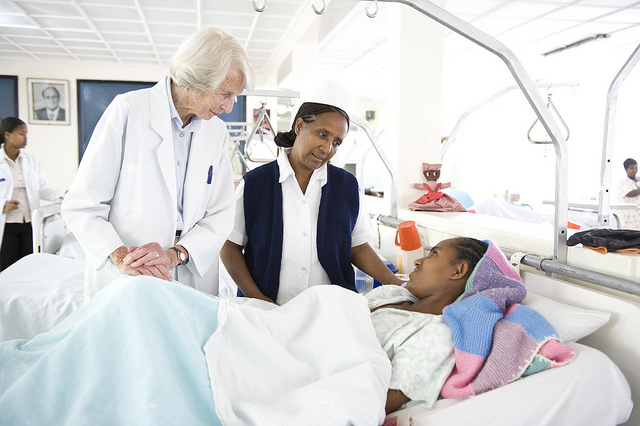Obstetric fistula:
The first time I heard these words I cocked my head in confusion.
Now every time I hear them, I clutch my vagina in sympathy.
For me, obstetric fistulas are a far away problem, both in geography and in time. But for many young women in the developing world, these two words mean pain, leaking urine and feces, a foul smell, shame and exile.
What is a fistula?
Fistula is the medical term for a hole where there should not be a hole. In the case of obstetric fistulas, it is a hole in the birth canal left when tissue breaks down during obstructed and prolonged labor.
I first came across fistulas when I read physician-author Abraham Verghese’s brilliant novel, Cutting for Stone.
Through his compelling narrative, I learned that it is more common for a woman to have a difficult labor if her pelvis is small, which is the case for people who have suffered malnutrition and young girls forced into arranged marriages and made to carry children when their bodies are not yet developed enough to do so.
For me, Cutting for Stone sparked a persistent and growing curiosity about fistulas.
I went on to read Half the Sky, a miraculously uplifting account of women’s oppression around the globe, written by the skillful and endlessly compassionate Nicholas Kristof and Sheryl WuDunn.
They reported that fistulas often develop when a woman gives birth without help, as is the case for many women whose husbands do not think they are worth the hospital bill. They instead push and push unassisted, sometimes for days, and the baby rarely survives.
Women who have had fistulas in the past are also more likely to have infertility issues, stillbirths, and spontaneous abortion with later pregnancies.
Because obstetric fistulas are caused or shaped by systemic misogyny, poverty, lack of access to medical care, early marriage and malnutrition, they disproportionately affect our sisters in the developing world.
In fact, the last fistula hospital in the US closed its doors in 1895, because the causes of fistula had been addressed and fistulas nearly eliminated. That’s right: this problem is completely preventable. When I discovered this, I was deeply moved to help these women in any way I could to lift themselves from this unnecessary and crippling affliction.
By all estimates, fistulas still plague approximately 2 million women worldwide.
It is difficult to determine just how many women worldwide have fistulas, because many women never seek medical help. While suffering with the physical pain of the fistulas, these women are often disowned by their husbands and exiled by their families because of the foul smell and because they struggle to carry children.
Shame drives them to drop out of school and withdraw from peers. When I was in middle school, my hand-me-down clothes made me embarrassed enough to want to never be seen, while young girls my exact age around the globe left school because they were horrified at their own injured bodies.
There are several factors that make it particularly difficult to help women with fistulas.
Even if a woman is informed enough to seek care, she often must walk long distances to reach a hospital. Sometimes even when she makes it to a hospital, she is turned away and told to return months later when a visiting fistula surgeon comes to the hospital for a few days to fix fistulas.
And, saddest of all, even when a woman has had her fistula repaired, she often cannot go home. She has no skills, is deeply disenfranchised from the exile, and, with potential infertility, has no place in her typical market within her community.
Thanks to fierce nonprofits working in the developing world, “fistula camps” are cropping up around the globe. Local and international physicians set up temporary fistula clinics and surgically repair fistulas for all the women they can.
In the past few years, a few groups have made it their mission to help women reintegrate to their communities post-fistula surgery. They teach the women vocational skills that are relevant to their villages’ or cities’ economies, and provide scholarships for the young women who wish to return to school.
If news of this painful problem has you looking for ways to help, you’re not alone.
Find a nonprofit or a foundation working to eradicate fistulas and empower survivors, and give until your vagina thanks you.
Or, write an article for submission to a journal to raise awareness!
Our sisters are suffering senselessly with a medical problem that we left behind 120 years ago.
Let’s kick it for good.
~
Relephant read:
Trading Girls For Cows: FGM, Human Rights & Cultural Tradition.
~
Author: Nell Maynard
Editor: Khara-Jade Warren








Read 2 comments and reply